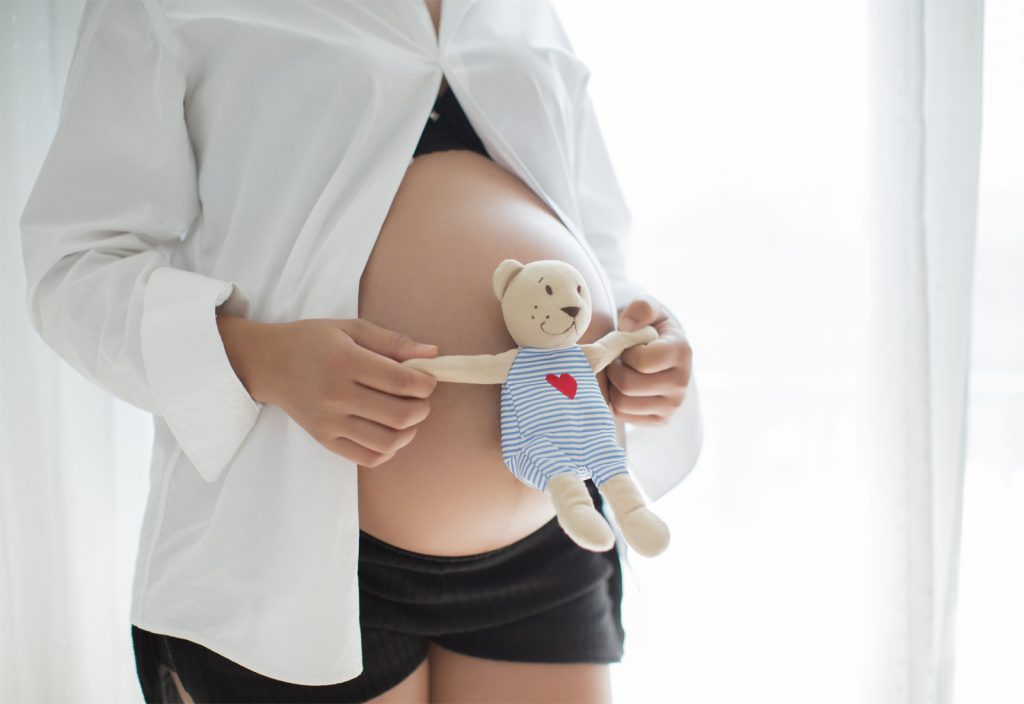Osteopathy offers a gentle, hands-on approach that supports the body through the many physical changes of pregnancy. As the baby grows, posture, balance and joint mobility naturally adapt, which can sometimes lead to discomfort or tension. Our osteopaths use safe, modified techniques to ease strain, encourage circulation and help the body adjust more comfortably.
During pregnancy, changes in hormones such as relaxin soften ligaments to prepare for birth. While this flexibility is essential, it can also make joints less stable, especially around the pelvis and spine. Osteopathy focuses on maintaining alignment and muscle balance to reduce pressure on these areas. Treatment is always adapted for each stage of pregnancy and performed with care to ensure comfort and safety.
Our clinic routinely sees expectant mothers from Croydon, Purley, Coulsdon and nearby areas seeking relief from lower back pain, pelvic discomfort and postural tension. Each session is tailored to your specific needs, helping to support wellbeing and prepare the body for the demands of childbirth.
During pregnancy, the body adapts continuously to accommodate the developing baby. Posture changes, weight shifts forward, and the curve in the lower spine often increases. These natural adjustments can place added strain on the back, hips, pelvis and rib cage. Osteopathy supports these changes by gently improving mobility in joints, releasing soft tissue tension and helping the body maintain balance.
Our osteopaths use light, controlled techniques to ease discomfort, promote circulation and encourage efficient movement. By addressing areas of tension early, we can help reduce compensatory strain and support overall comfort throughout pregnancy. The goal is not to correct what is normal, but to help the body adapt smoothly to each stage while maintaining ease of movement.
Osteopathic care can also support better breathing patterns, relieve tightness in the diaphragm and assist with gentle posture awareness. This helps mothers-to-be move more comfortably, rest more easily and stay active within safe limits.
The musculoskeletal system provides the framework and strength that support both mother and baby. During pregnancy, the joints of the pelvis and spine become more flexible, and the surrounding muscles work harder to maintain stability. This extra demand can lead to fatigue or imbalance if not well supported. Osteopathic treatment helps the joints move freely while keeping muscles and ligaments in balance, which supports posture and comfort.
The nervous system also plays a vital part, coordinating muscle tone, movement and organ function. When muscles or joints become restricted, they can affect local nerve pathways and create referred pain. Gentle osteopathic techniques encourage better communication between the musculoskeletal and nervous systems, helping to calm irritation and restore harmony.
By improving mechanical and neurological balance, osteopathy aims to enhance wellbeing for both mother and baby. Many women notice improved ease of movement, steadier balance and a greater sense of relaxation following treatment.
As the body changes to support the growing baby, certain muscles and joints are placed under greater stress. Many expectant mothers experience lower back pain, hip or pelvic discomfort, rib tightness, or sciatica caused by postural shifts and ligament softening. Osteopathy offers safe, gentle techniques to ease these common symptoms, helping the body move with less restriction.
Pelvic girdle pain and sacroiliac joint strain are frequent reasons women seek osteopathic support. These conditions can make walking, turning in bed or climbing stairs uncomfortable. Our osteopaths work carefully to improve pelvic alignment, reduce muscle tension and restore smooth movement between the pelvic bones.
Tension in the shoulders, upper back and ribs is also common as posture changes and the diaphragm adjusts to the baby’s position. Osteopathic treatment helps release these areas, improving breathing and reducing fatigue. Sessions are always tailored to the stage of pregnancy, ensuring comfort and safety.
Osteopathy during pregnancy is recognised as a safe, non-invasive form of care when provided by a qualified practitioner. Every session at our clinic begins with a detailed case history and assessment to ensure treatment is appropriate for both mother and baby. Our osteopaths are trained to recognise when osteopathy is suitable, when it should be adapted, and when referral to a GP or midwife is more appropriate.
Current research and clinical experience support the use of gentle manual techniques to help manage common pregnancy-related discomforts. These may include soft tissue release, articulation of restricted joints, and cranial techniques that promote relaxation and circulation. The intensity and position of each treatment are adjusted according to the stage of pregnancy, ensuring comfort and safety at all times.
Our approach is guided by evidence-based practice, professional regulation, and close collaboration with other healthcare providers where needed. If any red flag symptoms such as sudden swelling, severe pain, vaginal bleeding, fever, or unexplained neurological symptoms arise, your osteopath will recommend prompt medical assessment.
While osteopathy is generally safe during pregnancy, there are situations where treatment may need to be delayed or adapted. If you experience sudden or severe abdominal pain, vaginal bleeding, fever, persistent vomiting, severe headache, visual changes, or unexplained swelling in the hands or face, you should seek immediate medical attention. These symptoms may indicate an underlying condition that requires assessment by your GP or midwife before manual therapy is considered.
Osteopaths are trained to identify red flag symptoms and work within professional boundaries. If there is any concern about your health or your baby’s wellbeing, we will refer you for appropriate medical investigation. Similarly, if you have a high-risk pregnancy, a history of miscarriage, pre-eclampsia, or placenta previa, your osteopath will liaise with your GP or obstetric team to ensure any treatment plan is safe and suitable.
Open communication between healthcare providers helps ensure the best outcome for mother and baby. At Sanderstead Osteopaths, your safety and comfort remain our highest priorities, and we adapt every session to reflect your health status and stage of pregnancy.
If you are unsure whether osteopathic treatment is appropriate for your situation, contact our experienced team at Sanderstead Osteopaths. We welcome expectant mothers from Sanderstead, Croydon, Purley, Coulsdon, Warlingham, Kenley, and surrounding areas, offering honest advice and gentle, professional care throughout pregnancy.










